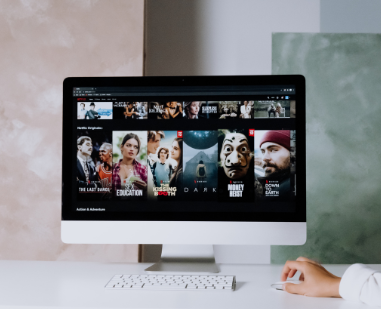Could YouTube Become the Ultimate Streaming Hub?
In a world where streaming services are as numerous as channels on cable TV, one can't help but dream of a unified platform. This article explores the tantalizing possibility of YouTube evolving into the ultimate streaming hub, and the formidable challenges that stand in its way. Join me as we dive into the complexities of the streaming world and ponder the future of digital entertainment.
Table of contents:
- Introduction
- The Current Streaming Landscape
- Challenges
- Content Distribution Across Platforms
- The Future of Streaming: What's Next?
- Conclusion: A Dream Deferred, But Not Forgotten
The Dream of a Unified Streaming Platform
As a streaming enthusiast and tech observer, I've spent countless hours navigating the fragmented landscape of digital content. Netflix for the latest binge-worthy series, Disney+ for my Marvel fix, Max, Hulu for next-day TV, and YouTube for everything else. Sound familiar?
For years, I've been obsessed with a wild idea. Every time I switch between these platforms, I can't help but think, "There's got to be a better way!"
What if YouTube, the pioneer of online video, became the ultimate streaming hub? One platform to rule them all, offering everything from homemade cat videos to high-budget shows like "Stranger Things". Sounds like digital nirvana, right?

This thought experiment has occupied my mind for quite some time. The more I've dug into it, the more I've realized why this streaming utopia isn't a reality - at least not yet. Let me take you on a journey through my findings, challenges I've identified, and some data I've gathered along the way.
The Current Streaming Landscape
Before we dive into why YouTube isn't becoming (yet) the one-stop-shop for all our streaming needs, let's take a look at the current state of affairs. Here's a quick comparison of major streaming platforms:
| Platform | Monthly Price (Basic) | Original Content | Live TV | User-Generated Content | Offline Viewing |
|---|---|---|---|---|---|
| YouTube | Free (with ads) | Limited | Yes (YouTube TV) | Yes | Premium only |
| Netflix | $8.99 | Extensive | No | No | Yes |
| Disney+ | $7.99 | Moderate | No | No | Yes |
| Hulu | $5.99 (with ads) | Moderate | Yes (Hulu + Live TV) | No | Yes (No ads plan) |
| Amazon Prime Video | $8.99 | Moderate | No | Limited | Yes |
As you can see, each platform has its strengths and unique offerings. YouTube stands out with its user-generated content and free tier, while others focus on original programming and offline viewing options.
Now, let's delve into the reasons why I believe YouTube isn't becoming the ultimate streaming hub - yet.
Challenges
1. The Battle for Brand Identity
I've noticed how hard streaming giants have worked to build their unique brand identities. It's not just about logos and color schemes; it's about entire ecosystems of content and user experiences.
From my perspective, here's what makes each brand unique:
- Netflix: Known for its binge-worthy original series and "Netflix and chill" culture;
- Disney+: Home to beloved franchises like Marvel, Star Wars, and classic Disney content;
- Hulu: Go-to platform for next-day TV and a growing library of originals;
- Amazon Prime Video: Part of a larger ecosystem, offering original content alongside other Prime benefits;
- YouTube: The king of user-generated content, with a side of original programming.
The idea of becoming "just another channel" on YouTube's platform probably doesn't sit well with these streaming powerhouses. Their individuality is a crucial asset, and I doubt they're eager to dilute it.
2. The Revenue Sharing Conundrum
Here's a puzzle I can't quite solve: If YouTube were to host content from multiple major streaming services, how would they split the money?
Some services are ad-supported, others are subscription-based, and many use a hybrid approach. Creating a fair revenue-sharing model seems like trying to divide a pizza equitably while blindfolded. Possible? Maybe. Easy? Definitely not.
Consider these revenue models:
- Ad-supported (e.g., YouTube's main platform, Hulu's basic tier);
- Subscription-based (e.g., Netflix, Disney+);
- Hybrid (e.g., Hulu's premium tiers, YouTube Premium);
- Transactional (e.g., Amazon Prime Video's rental/purchase options).
Reconciling these diverse models under one roof would be a herculean task, to say the least.
3. Antitrust Concerns: The Legal Elephant in the Room
As I've followed tech news over the years, I can't help but think about the regulatory hurdles. In today's climate of increased scrutiny on tech giants, I imagine a move to consolidate major streaming services under one roof would raise significant antitrust red flags.
Potential concerns could include:
— Market concentration: A YouTube super-hub could dominate the streaming market, potentially controlling an overwhelming share of viewership and ad revenue.
— Reduced competition: With major players under one platform, there might be less incentive for innovation and competitive pricing.
— Barriers to entry for new players: A consolidated platform could make it extremely difficult for new streaming services to gain a foothold in the market.
— Control over pricing and content distribution: YouTube could potentially have too much power in determining content value and distribution methods.
— Data monopoly: Consolidating user data from multiple platforms could give YouTube an unfair advantage in targeted advertising and content recommendations.
From my perspective, these legal challenges alone could be enough to put the brakes on any serious attempts at creating this kind of streaming superhub. Regulators worldwide have already shown increased interest in the tech sector, and a move of this magnitude would likely trigger intense scrutiny and potential legal action.
4. The Technical Tangle
At first glance, integrating multiple streaming platforms into YouTube might seem straightforward. But the more I think about it, the more complex it becomes.
Each service has its own:
- Content delivery networks;
- Recommendation algorithms;
- Digital rights management systems;
- User interfaces and experiences.
Merging these disparate systems seamlessly? To me, it looks about as easy as solving a Rubik's cube underwater while wearing oven mitts.
5. The Data Dilemma
In my observation, streaming services guard their user data like dragons hoarding gold. They rely on this data for content creation, curation, and recommendations. It's a crucial competitive advantage.
Key data points that streaming services value include:
- Viewing habits and preferences;
- Search and browsing patterns;
- User demographics;
- Engagement metrics (e.g., completion rates, binge-watching behavior).
I can't see them willingly sharing this treasure trove, even if it meant being part of a larger platform.
Content Distribution Across Platforms
Another interesting aspect I've noticed is how content is distributed across these platforms. Based on my observations and some industry reports, here's a rough breakdown of content types by percentage for each major streaming service:
| Platform | Movies | TV Shows | Original Content | User-Generated | Live Content |
|---|---|---|---|---|---|
| YouTube | 5% | 10% | 5% | 75% | 5% |
| Netflix | 20% | 40% | 40% | 0% | 0% |
| Disney+ | 40% | 30% | 30% | 0% | 0% |
| Hulu | 15% | 60% | 20% | 0% | 5% |
| Amazon Prime Video | 30% | 40% | 25% | 5% | 0% |
This distribution highlights the unique positioning of each platform. YouTube's strength in user-generated content is clear, while others focus more on professional productions and original content.
The Future of Streaming: What's Next?

Despite these challenges, I can't help but wonder about the future. As a viewer myself, I feel the fatigue of juggling multiple subscriptions. I see technology advancing at a breakneck pace. Could these factors eventually push us towards new models that address these pain points?
Some possibilities I'm keeping an eye on:
- Improved cross-platform search and discovery tools;
- AI-driven content aggregation services;
- Blockchain-based decentralized streaming platforms;
- Virtual reality streaming experiences.
While these ideas are exciting, they also come with their own sets of challenges. For instance, cross-platform tools would require unprecedented cooperation between competitors. AI aggregation raises privacy concerns. Blockchain solutions face scalability issues. And VR streaming is still in its infancy.
Conclusion: A Dream Deferred, But Not Forgotten
For now, my dream of a single, comprehensive streaming platform remains just that - a dream. The challenges of brand identity, revenue sharing, legal concerns, technical complexities, and data ownership seem too significant to overcome in the near term.
But in this ever-changing digital landscape, I've learned that today's impossibility could be tomorrow's reality. After all, who would have thought 20 years ago that we'd be streaming high-quality video on our phones?
What do you think? Am I onto something with this idea of YouTube as the ultimate streaming hub, or am I just binge-thinking? Is a more unified streaming future inevitable, or will we continue to navigate a sea of competing platforms?
I'm genuinely curious to hear your thoughts on this. After all, as viewers and consumers, our voices and choices shape the future of how we experience digital content. Who knows? Maybe someone out there is already working on solving these challenges, and the next big revolution in streaming is just around the corner.
Until then, I'll keep dreaming of a world where all my favorite content lives under one virtual roof. And in the meantime, I'll be here, remote in hand, continuing my grand tour of the streaming universe. Happy watching!
